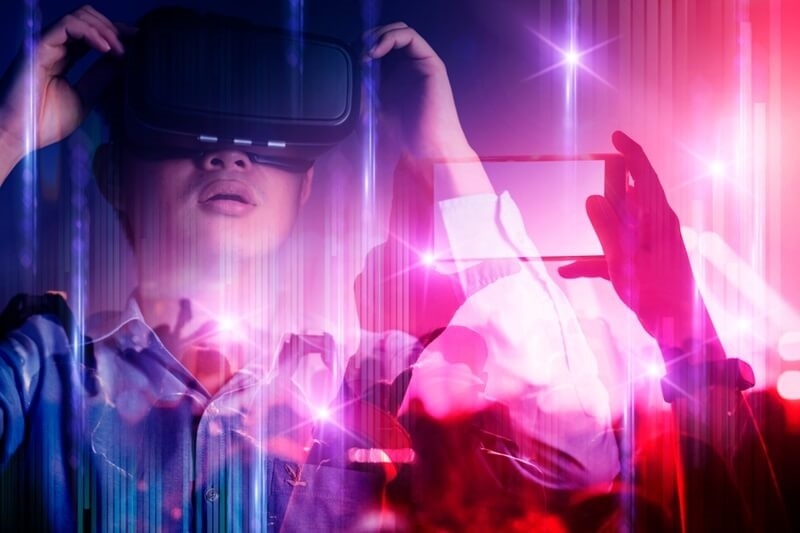
Virtual festival culture has been one of the most discussed trends in entertainment and culture in recent years. With growing technology, the means of people coming together to hear music, view paintings, and visit cultural events have also changed. From concerts to art exhibitions, people can now access the world within the confines of their homes. This blog will discuss how the emergence of virtual festivals is revolutionizing entertainment nowadays, why they have become so successful, and how they can develop in the years to come.
The trend of virtual festivals picked up speed seriously when COVID-19 took over, with health issues and lockdowns rendering live events out of the question. What was otherwise a stopgap measure soon turned into a massive revolution in the entertainment world. Producers, artists, and technology companies collaborated to create interactive online performances that attempted to replicate the live experience.
And now, the virtual festival trend is no longer a Plan B. Rather, it has found its own space in the broader events industry. From online raves to immersive art experiences, people can now attend various virtual events.

There are several reasons why virtual festivals continue to be popular among individuals:
Virtual events eliminate most of the barriers of attending physical festivals. No traveling is required, no hotel booking is necessary, and no logistical problems are there. People all over the world can join without visa problems, air tickets, or expensive tickets.
Virtual hosting of events saves the participants and the organizers money. The organizers get to save on reduced venue rental, staff, and security costs, while the participants pay less or no money to attend the event. This aspect is a huge driving force towards virtual festival hosting.
Web-based technologies create new forms of creativity that are not possible in the real world. Organizers are able to test visuals, interaction, and audio design in ways that physical constraints would not. Augmentation of VR festival experiences is an ideal case of how technology can improve the participant's experience.
Individuals who may never find each other in the real world now have the chance to experience life together. These festivals create global communities of like-minded people across cultures and reduce geographic barriers.
Here are some common Virtual Festivals:
Among the most ubiquitous types of virtual events are online music festivals. Platforms such as Twitch, YouTube, and specialized festival websites stream live bands, DJ sets, and interactive programming. Among the best online music festivals, 2025 will likely elegantly circumvent such barriers even further.
For instance, virtual music festivals can have chat rooms, real-time polling, and other interactive options so that the experience will feel communal even if people are sitting alone at home.
Art museums and cultural festivals have also come onto the bandwagon of virtual festival culture. Such festivals can have virtual tours, artist talks, and workshops streamed live or on demand. With the addition of AR and VR, these experiences become even more interactive.
Gaming conventions and tech shows soon embraced virtual options. They utilize sophisticated platforms that allow networking, panel discussions, and product showcases of interest to industry players and the public at large.
Technology powers the virtual festival event. The advancements in VR, AR, and AI enable users to engage in more interactive and immersive experiences than ever before.
VR festival events are especially common among festival-going music fans. VR headset users go to festivals, stroll through virtual locations, and visit with other people's avatars. The event is immersive enough that the virtual activity compares to, if not is quite close to, the actual activity.
AR accessories have a tendency to add visual effects, filters, and overlays to real-time streams. This is a richer, more immersive experience for the viewer without even needing special equipment.
AI is used in making the experience of the festival more customized, from event recommendations to optimizing streaming quality according to user preferences and bandwidth. Virtual assistants and chatbots also help participants navigate events, query information, and provide real-time support.
Statistics indicate just how powerful the virtual festival phenomenon has grown to be. Current virtual event attendance data indicate tens of millions of individuals worldwide are tuned into online festivals. Some examples include:
Sponsor participation in web-based events has also increased exponentially. Brands soon realized that it was possible to access international crowds through virtual festivals. Sponsorship on the web comprises sponsored content, branded virtual spaces, and customized online promotions.
Sponsors in digital events receive solid analytics that allow them to track ROI and engagement more easily than through conventional methods. Data-driven promotions render virtual sponsorship extremely appealing to companies from various industries.
While there are several advantages, virtual festivals present their own challenges:
Internet connectivity, platform stability, and device compatibility may influence the quality of the experience. Not everyone may have access to high-speed internet or good technology.
Maintaining engagement of users in a virtual environment takes innovative solutions. Lacking the hum of a crowd in a physical environment, it is easy for users to get distracted or lose interest.
Whereas online events reduce expenses, profitability matters are also put into doubt. It is hard for organisers to reap returns from online festivals as opposed to physical ones.
It is of utmost importance to protect user information and ensure the security of virtual spaces. Organizers have to ensure strong cybersecurity mechanisms in order to win trust.
The post-pandemic event innovation environment is both physical and digital. The hybrid events, which are half online and half offline, are gaining traction. These provide a seamless combination of both: the vigor of live crowds as well as the ability to be online.
Post-pandemic event innovation techniques involve:
This blended approach not only increases the audience base but also renders events more resistant to interference.
In the coming years, the virtual festival trend will expand immensely and become more varied. Some likely developments include:
As VR and AR technology are becoming cheaper and more accessible, more individuals will be in a position to engage in immersive virtual events. These technologies will also continue to break down the physical and virtual dichotomy.
Future platforms will likely remain centered on interactivity. Gamification, socialization, and interactive experiences will continue to draw audiences in and connect with them.
Virtual festivals provide a green alternative to offline events. They reduce the carbon impact linked to travel, logistics, and installations. With the growing global warming concerns, this aspect will become more critical.
Other sectors will keep using virtual events besides music and art. Corporate training, education, and even medical conventions are embracing the virtual platform for use.
Among the best online music festivals 2025, few will set new benchmarks for the industry. Some of them include:
The best online music festivals 2025 will not only mirror what's live, but also continue to innovate on what a festival in the digital age will be like.
Virtual festival culture isn't going away. It's a paradigm shift in the way humans consume entertainment and culture. Through technology, these events offer convenience, innovation, and all sorts of other kinds of community. The statistics for virtual event participation suggest that people are fully utilizing these services in record numbers.
The virtual event landscape is full of opportunities, from VR festival participation to sponsorship opportunities in virtual events. And with the increasing incursions into post-pandemic event innovation days, we will soon be seeing hybrid models that blend the physical and digital world front and centre.
This content was created by AI